Discover 11 hidden attractions, cool sights, and unusual things to do in Maryville (United States). Don't miss out on these must-see attractions: Sam Houston Schoolhouse, Bicentennial Greenbelt Park, and Sandy Springs Park. Also, be sure to include Friends Church in your itinerary.
Below, you can find the list of the most amazing places you should visit in Maryville (Tennessee).
Table of Contents
Sam Houston Schoolhouse

School in Blount County, Tennessee. Sam Houston Schoolhouse State Historic Site is a single-room log cabin-style schoolhouse in Maryville, Tennessee, built in 1794. Sam Houston taught at the school as a young man, before the War of 1812.
Open to the public, the schoolhouse is a Tennessee state historic site operated under an agreement with the Tennessee Historical Commission. It was listed on the National Register of Historic Places in 1972.
The school house was originally built by a Revolutionary War veteran, Andrew Kennedy along with Henry McCulloch and other neighbors.
The National Heritage Area Program and Blount County Tennessee: A Feasibility Study says “Sometime after his arrival in Tennessee, probably in 1794, Kennedy and Henry McCulloch joined with some neighbors to construct a small log schoolhouse in a clearing less than a mile from the Kennedy home. No definitive explanation can now be given for the decision to locate the schoolhouse at the somewhat unusual site more than a half-mile from Little River. Presumably its proximity to the refreshing spring which flows nearby and perhaps its central position in relation to the original builders' homes were factors in the selection of the site.”[1]
Address: 3650 Old Sam Houston School Rd, 37804-5644 Maryville
Bicentennial Greenbelt Park
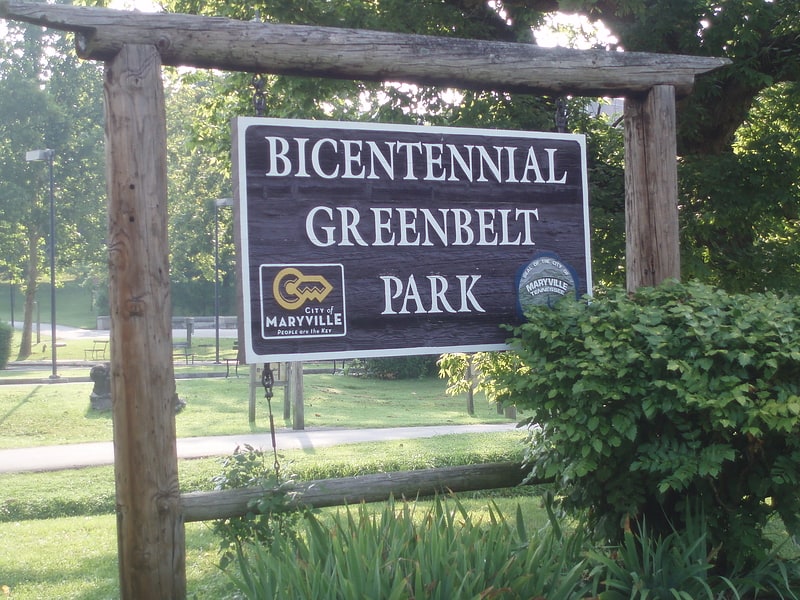
Park in Maryville, Tennessee. Bicentennial Greenbelt Park is a public park located in downtown Maryville, Tennessee.[2]
Sandy Springs Park
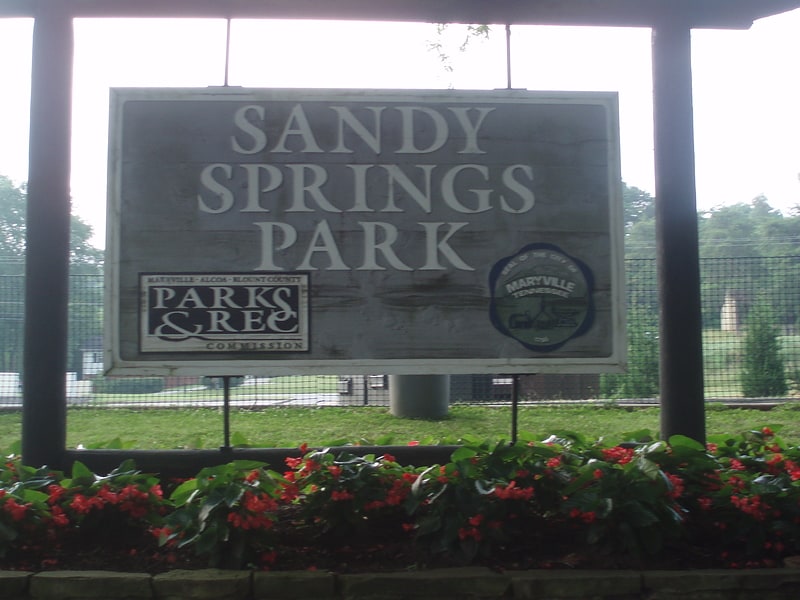
Park in Maryville, Tennessee. Sandy Springs Park is a public park located in Maryville, Tennessee.[3]
Address: 1201 Montvale Station Rd, 37803-5811 Maryville
Friends Church
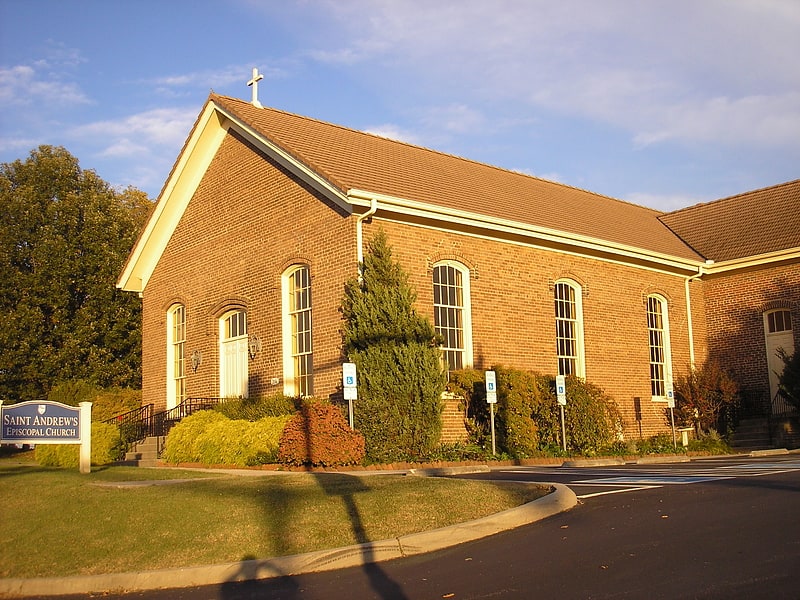
Church in Maryville, Tennessee. Friends Church is a historic church at 314 W. Broadway in Maryville, in the U.S. state of Tennessee.
It was built in 1871 as a meetinghouse for the local congregation of the Society of Friends (Quakers). The Quakers were an important group in Maryville in the 19th century that played a major role in building the community's early schools, including the Freedman's Institute and Maryville Normal School. The single-story brick church is of Italianate design and is laid out on an ell plan.
Since 1940 the building has been used for Episcopal worship. It currently houses St. Andrew's Episcopal Church.
It is the oldest brick church in Blount County, and was listed on the National Register of Historic Places in 1989. It became a Blount County historic landmark in 2007.[4]
Anderson Hall

Anderson Hall, built in 1870, is the oldest building on the campus of Maryville College, Maryville, Tennessee, named for college founder Isaac L. Anderson.
Anderson Hall is a brick building designed in the Second Empire style by architect Benjamin Fahnestock. Funds for its construction were contributed by the Freedmen's Bureau, Pittsburgh businessman William Thaw, and John C. Baldwin of New York.
Originally the college's only building, Anderson Hall is currently used as a classroom building. It was listed on the National Register of Historic Places in 1975. Extensive renovations were started in 2008.
The bell tower of Anderson Hall is depicted in the college's logo.[5]
John Alexander House
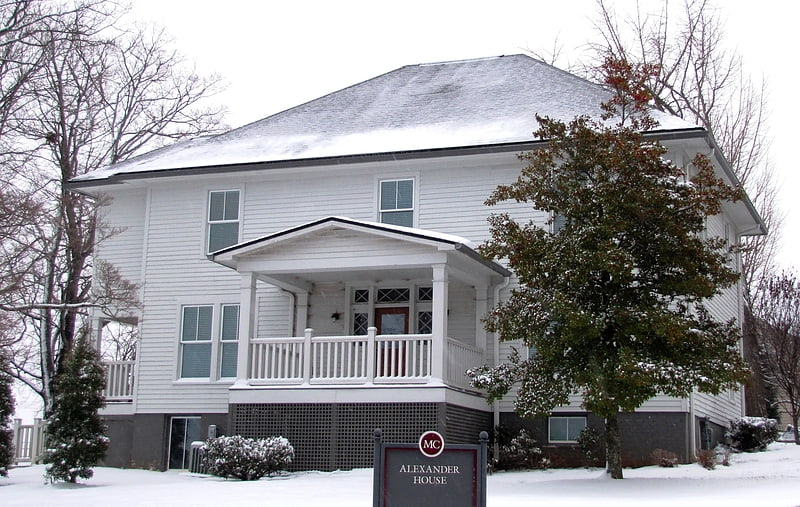
The John Alexander House is a historic house in Maryville, Tennessee. It was built in 1906 for Presbyterian minister John Alexander, and designed in the Colonial Revival architectural style. It is listed on the National Register of Historic Places, and it is owned by Maryville College.[6]
On Broadway Salon

Bridge
Address: 715 E Broadway Ave, Maryville
Everett Hills Baptist Church
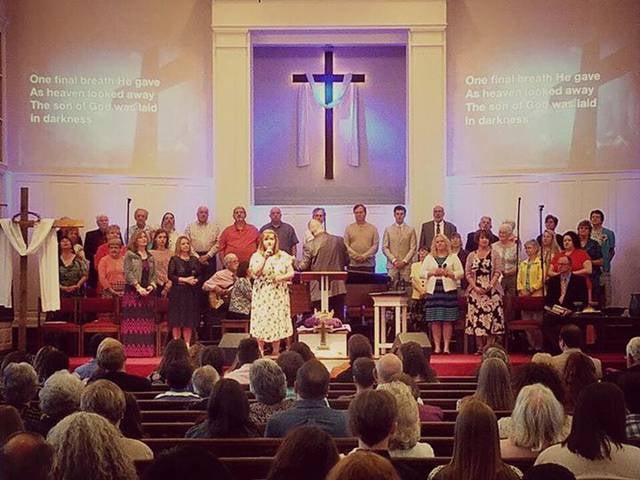
Park, Relax in park
Address: 401 S Everett High Rd, 37804-4121 Maryville
David Jones House
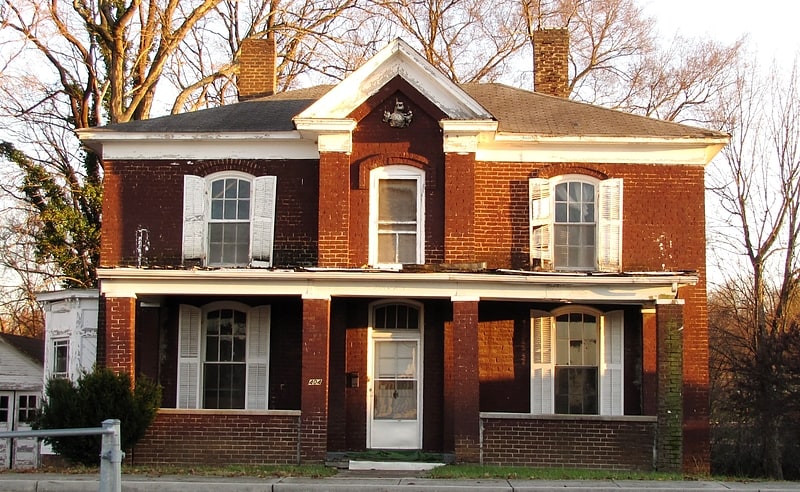
Building in Maryville, Tennessee. The David Jones House on High St. in Maryville, Tennessee, also known as the Elmer B. Waller House, was built in 1874 by Maryville builder David Jones. Jones ran a brick company and built numerous brick buildings in Maryville including the Blount County Courthouse.
The house is one of two best examples of Italianate architecture, along with the Peter Bartlett House, in Blount County. It was listed on the National Register of Historic Places (NRHP) in 1989.
David Jones also built the county's only Second Empire style house on Broadway (at 720 Tuckaleechee Pike), which is also NRHP-listed.[7]
Blount County Public Library
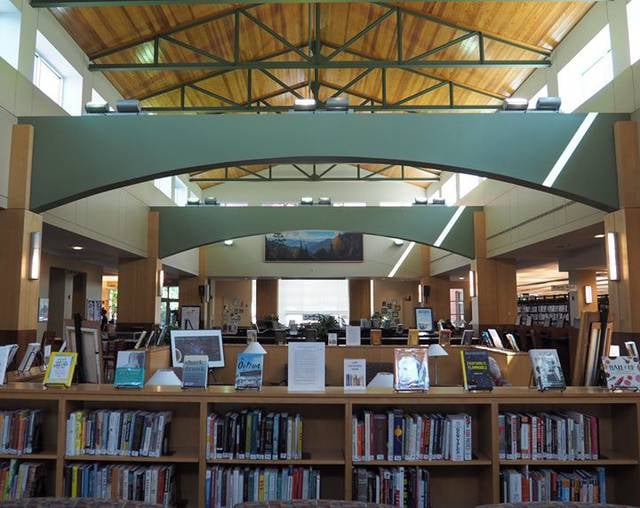
Library
Address: 508 N Cusick St, 37804 Maryville
McNutt-McReynolds House
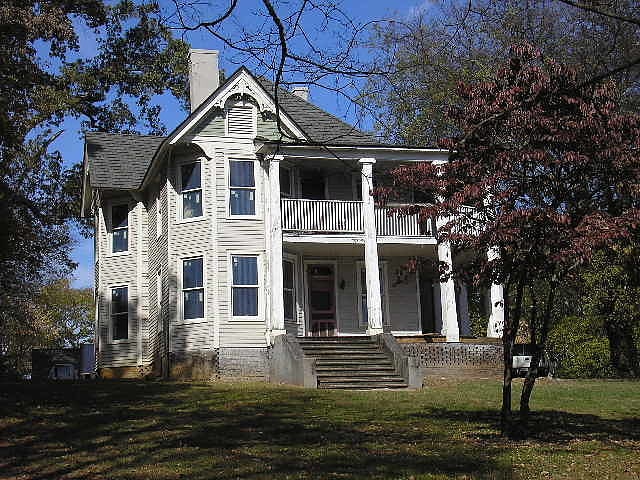
The McNutt-McReynolds House is a historic house in Maryville, Tennessee, U.S..It was built circa 1900 for Robert G. McNutt, a merchant. It was designed in the Queen Anne architectural style. It was purchased by J. A. Reynolds in 1906, and by Dr. W. B. Lovingood in 1920. It was listed on the National Register of Historic Places on July 25, 1989, and was delisted on October 28, 2021.[8]